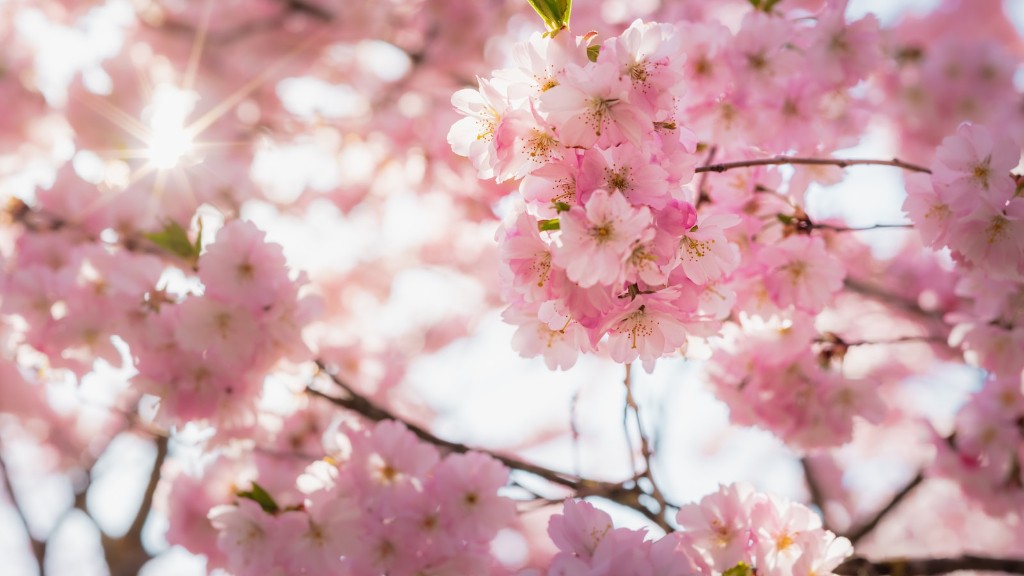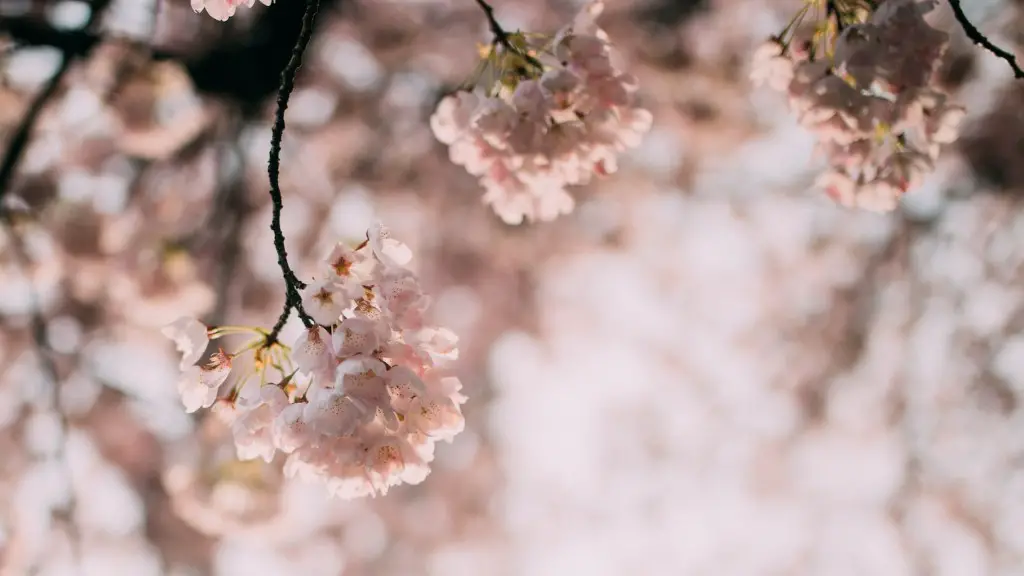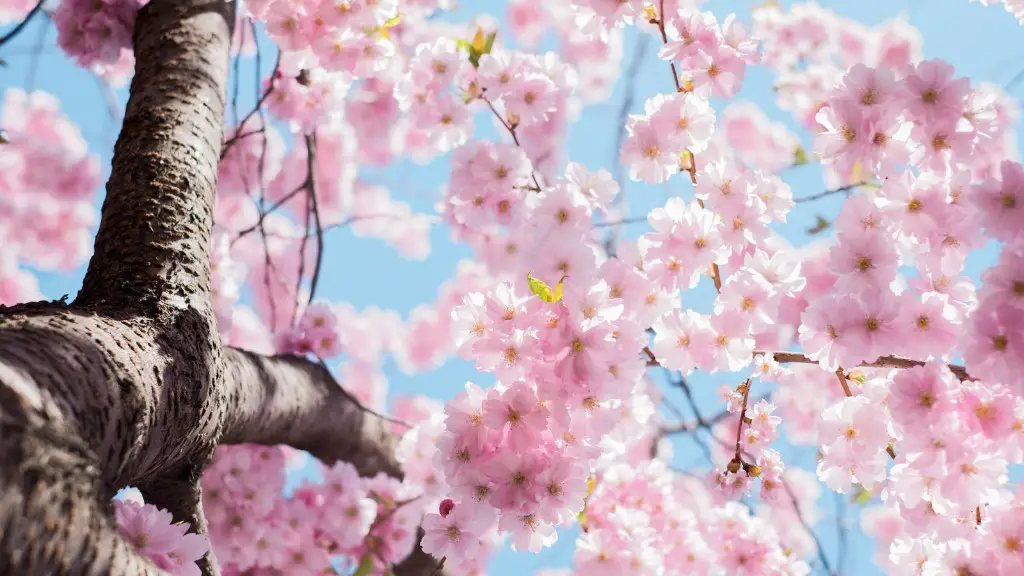Planting the tree
A dwarf weeping cherry tree is an attractive and easy to care for tree that you can enjoy in your garden for many years. Planting the tree correctly is essential to ensuring it grows healthy and maintains its unique form. It’s possible to buy a dwarf weeping cherry tree as a young sapling or as a mature tree, so choose the right option for your garden and climate. Here are some steps to consider when you plant your dwarf weeping cherry tree.
Choose The Right Spot
The first and most important step is finding the right spot for your tree. This should be an area of the garden that receives four or more hours of direct sunlight a day. Test the pH levels of your soil to make sure it is not too acidic or alkaline. Also, make sure the area is well drained and not too close to existing plants and trees as the weeping cherry tree requires space to reach its full growth potential.
Digging The Hole
Once you have chosen your spot, it’s time to start digging the hole. The hole should be twice as wide and deep as the root ball of the tree. Make sure the sides are rough to aid with the tree’s root system and spread. Also, you should position the tree in the hole so that the base of the trunk is level with the surrounding soil after being filled in.
Check For Damage
Before placing the tree in the hole, make sure to inspect the root ball and trunk for any damage or wounds. If you find any, treat them as soon as possible with a fungicide or other treatment. Doing this will help to protect the tree from pests and diseases.
Filling In The Hole
Now that you’ve placed the tree in the hole, it’s time to fill it in. Use a soil mix for your weeping cherry tree. This mix will ensure that the soil is able to hold the right amount of moisture and is also full of essential nutrients. Once the hole is filled, give the tree a good watering to set the roots.
Applying Staking
The next step is applying staking to your tree. This is an important step in ensuring that your tree remains upright and healthy. Stakes should be long enough to reach the root ball and can be made out of wood or metal. Once the tree is firmly secured, apply mulch around the area to maintain moisture and reduce weed growth.
Pruning
You can prune the dwarf weeping cherry tree to maintain its shape. Do this early in spring before the tree begins to produce leaves. This will encourage more flowering buds and create a fuller, more attractive shape.
Post-Planting Care
Finally, don’t forget about post-planting care. Make sure to water your dwarf weeping cherry tree regularly and fertilise it at least once a year. Also, monitor the tree for signs of pests and diseases. If you notice anything abnormal, act quickly to treat it.
Fruit Production
Fruit production on a dwarf weeping cherry tree is a beautiful sight. The flowers can range in color from white to pink and are abundant in late spring. The fruit is small, round and dark red or purple when ripe. Remember to remove any fruit that falls on the ground as this can affect the overall health of the tree.
Harvesting fruit
Harvesting the fruit should be done as soon as possible after it has ripened. The fruit is sweet and can be used in recipes or simply eaten on its own. Make sure to inspect each piece of fruit for any signs of pests or disease before eating.
Pest and Disease Control
It’s important to regularly inspect the tree for any signs of pests or disease. Common pests for a dwarf weeping cherry tree include Japanese beetles and aphids. Diseases to look out for are verticillium wilt and bacterial canker. If you notice any of these symptoms, act quickly to treat them.
Pruning For Aesthetic Appeal
Pruning is also important to keep the tree aesthetically appealing. The tree should be pruned on the sides of the trunk to create the classic “weeping” shape. This should be done after the tree has flowered and only if it’s necessary.
Maintenance
Just like any other tree, a dwarf weeping cherry tree requires regular maintenance to thrive. This includes watering, fertilising and ensuring the tree gets an adequate amount of sunlight. A well-maintained dwarf weeping cherry tree can be enjoyed in a garden for many years.
Frost Protection
It’s important to protect your dwarf weeping cherry tree from the frost. This can be done by wrapping the tree in hessian cloth. In some cases, you may need to add extra protection such as chicken wire or plastic coverings.
Winter Care
In winter, your tree requires some extra care to make sure it survives. Make sure to protect it from extreme cold and trim off any damaged limbs. Also, mulch the tree with an organic material such as grass clippings or shredded leaves. This will help to keep the soil damp and prevent the roots from freezing.
Fertilising During Winter
Despite being dormant in winter, the tree still needs to be fertilised. Use a slow-release fertiliser and apply it evenly around the fertilizer zone. Also, make sure the mulch is several inches thick to keep the nutrients in the soil.
Watering During Winter
Your dwarf weeping cherry tree may need watering during winter, especially if there is a period of warmer weather. Check the soil often and remember to water near the top of the tree and avoid wetting the leaves. To make sure the tree is getting enough water, push a finger five inches into the soil – if it’s dry, water it until you can feel the moisture.
Winterizing The Tree Before Winter
Before winter arrives, you should winterize the tree. This includes digging a shallow trench around the tree and adding a few inches of compost. This will encourage earthworms, attract beneficial fungi and aerate the soil. The compost should be covered with mulch and will help protect the tree’s roots during the winter months.
Provide Adequate Nutrition
Your dwarf weeping cherry tree needs to be nutritious to thrive. Regularly fertilise the tree and use a good-quality, slow-release fertiliser suitable for cherries. Apply the fertiliser according to the instructions on the packaging. It’s also important to check the pH levels of the soil and make sure the nutrients are well balanced.
Feeding The Tree
You can feed your tree with a basic liquid or granular fertiliser and make sure to apply it only to the base of the tree and not to the leaves. Alternatively, you can use a natural, organic fertiliser such as compost or manure. This will help to boost the health, colour and size of the tree’s flowers.
Add Compost
Adding compost around the tree is a great way to provide additional nutrition. Compost provides additional nutrients and helps the soil retain moisture. It also encourages beneficial fungi and worms which can improve the overall health of the tree.
Use Plant Food Spikes
Plant food spikes make a great addition to your dwarf weeping cherry tree. These spikes can be inserted into the ground every few weeks and provide your tree with the necessary nutrients. This is a great way to provide a consistent supply of nutrition and help your tree to thrive throughout the year.
Mulching The Soil
Mulching the soil around your tree is a great way to provide added nutrition. Use an organic mulch such as bark, sawdust or shredded leaves. This will help to lock in moisture and reduce weed growth. Also, the mulch will slowly break down and act as a fertiliser for the tree.
Balance pH Levels
Finally, make sure to keep the pH levels in check. If the soil is too acidic or too alkaline, this can affect the tree’s ability to absorb nutrients. You can test the pH levels with a pH tester or with an at-home soil test kit.
Caretaking Tips
Caretaking for a dwarf weeping cherry tree is relatively easy, but there are some tips to keep in mind. Doing the correct caretaking for your tree is essential for its optimal growth and health. Here are some tips for caretaking your dwarf weeping cherry tree.
Watering The Tree
Your dwarf weeping cherry tree needs to stay well hydrated to remain healthy. Water your tree often, making sure the soil remains damp at all times. During periods of extreme heat or cold, you may need to water your tree more often.
Check For Pests And Disease
Regularly inspect your dwarf weeping cherry tree for signs of pests and disease. Look out for any yellowing or wilting leaves or any discolored spots on the trunk. If you notice any of these signs, contact an arborist for assistance.
Proper Pruning
The tree should be pruned in late winter or early spring to maintain its shape. Make sure to cut off any broken or dead branches and make sure not to prune too much as this will affect the tree’s growth.
Watch For Storm Damage
Your dwarf weeping cherry tree may be vulnerable to storm damage. Monitor the tree after storms and look out for any broken or damaged branches. Make sure to quickly remove any broken branches as this will help protect the tree’s overall health.
Maintain pH Levels
Maintaining the pH levels of the soil is essential for your tree’s health. Test the soil frequently and adjust the pH levels with acidic or alkaline fertilisers. This will ensure your tree is able to absorb the necessary nutrients.
Proper Winter Care
Winter is a difficult time for trees, especially if they’re young. Make sure to wrap them in hessian cloth and mulch around the base of the tree to keep the roots warm. If there is a period of warmer weather, water the tree to prevent the roots from freezing.



